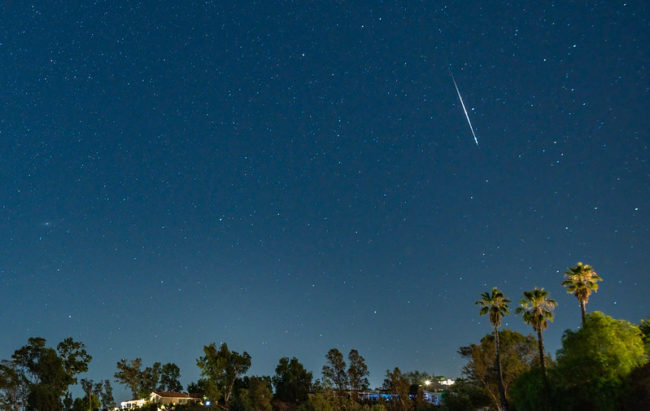With social media and news last month featuring a shooting star over Glasgow, the terminology for these incredible spectacles is often confused. Let’s discern our meteorites from our fireballs and expand on why these events are more than beautiful sights.
A fireball is the term for, literally, a ball of fire seen in the sky. Fireballs are the result of any sufficiently large object falling at high speed across the sky, and are called this when their brightness is the same as or greater than that of the planet Venus when seen at night from Earth [1]. A fireball can be organic or man-made in origin- that is, a small piece of an asteroid as opposed to something like falling rocket debris.
A meteor is an organically-originating fireball, and thus “fireball” is the best way to describe something falling to Earth before its source is known- for example, you wouldn’t call a piece of rocket debris a meteor, because it isn’t a space rock! Many meteors are pieces of asteroids that have been chipped off of their parent bodies by collisions with other asteroids. Other meteors are pieces of the Moon or even Mars that have been ejected by impact events! Sometimes meteors or meteor showers, which are many flashes of light in a relatively short period of time, are called shooting stars. Most meteors break apart as they burn up in our atmosphere, and the friction of the smaller pieces against air molecules will cause them to heat up and turn to dust before any can hit the ground.
If a meteor is large enough to have survived the intense heat and pressures of planetary entry, we have a meteorite as soon as it hits the ground. Meteorites are incredibly valuable scientific pointers to the formation of our Solar System, and can even provide insights into the formation of other systems with similar chemical abundances. The study of meteorites can allow us to determine which asteroids or parent bodies in our solar system contain particular elements- for example, it may have been a meteor which brought some of the fundamental building blocks of life to Earth (Sulphur, Phosphorous, Oxygen, Nitrogen, Carbon, and Hydrogen). If we could identify these bodies in our own Solar Systems, we could ascertain which other systems, if any, have the same potential for life as our own.
[1] https://www.amsmeteors.org/fireballs/faqf/
Edited by Liam Butler
Copy-edited by Rachel Shannon

